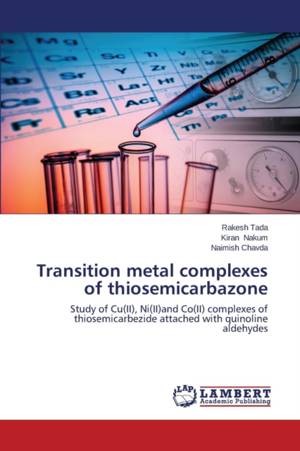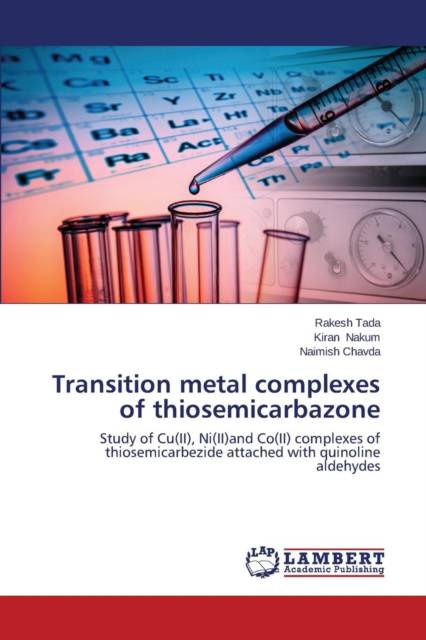
- Afhalen na 1 uur in een winkel met voorraad
- Gratis thuislevering in België vanaf € 30
- Ruim aanbod met 7 miljoen producten
- Afhalen na 1 uur in een winkel met voorraad
- Gratis thuislevering in België vanaf € 30
- Ruim aanbod met 7 miljoen producten
Zoeken
Transition metal complexes of thiosemicarbazone
Study of Cu(II), Ni(II)and Co(II) complexes of thiosemicarbezide attached with quinoline aldehydes
Rakesh Tada, Kiran Nakum, Naimish Chavda
Paperback | Engels
€ 39,45
+ 78 punten
Omschrijving
Summarizes the preparation and structure characterization of various thiosemicarbazones attached Quinoline aldehyde as well as their metal complexes. Synthesized ligands and metal complexes were characterized by different technique like mass, IR, 1H NMR, 13C NMR, UV-Visible spectroscopy as well as elemental analysis. In the elemental analysis of the synthesized compound both calculated and found percentages of elements are matched so elemental analysis confirms the structure of the thiosemicarbazone. Mass spectral data confirm the structure of the ligand as indicated by the molecular ion peak (M+) corresponding to their molecular weight. In IR spectra of the synthesized thiosemicarbazone showed useful information about the structure of the compound. In the IR spectra, some significant stretching bands due to -N-H, -N-N-, -NH2 and -C=S were observed at specific frequencies. In the 1H NMR spectra, the signal due to -CH=N-, -N-NH, NH2 and aromatic protons were observed in the expected regions. The 13C NMR spectrum provides direct information about the carbon skeleton of the synthesized compound.
Specificaties
Betrokkenen
- Auteur(s):
- Uitgeverij:
Inhoud
- Aantal bladzijden:
- 68
- Taal:
- Engels
Eigenschappen
- Productcode (EAN):
- 9783844322316
- Verschijningsdatum:
- 17/02/2014
- Uitvoering:
- Paperback
- Formaat:
- Trade paperback (VS)
- Afmetingen:
- 152 mm x 229 mm
- Gewicht:
- 113 g

Alleen bij Standaard Boekhandel
+ 78 punten op je klantenkaart van Standaard Boekhandel
Beoordelingen
We publiceren alleen reviews die voldoen aan de voorwaarden voor reviews. Bekijk onze voorwaarden voor reviews.











